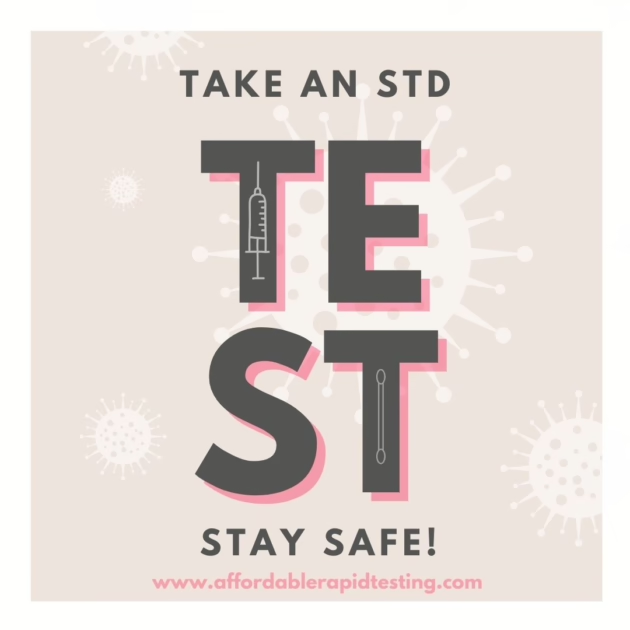Knowing how common sexually transmitted diseases (STDs) are in the United States is very important for public health. STDs affect millions of people every year and can cause serious health problems if not treated. Some STDs might not show any symptoms at first, which makes it easy for them to spread without people knowing. By learning about how widespread STDs are, we can better prevent and treat these infections, keeping everyone healthier.
Understanding and taking action on STD testing can make a big difference in your health and the health of those around you. Let’s talk some more about how common STDs are in the U.S., why it’s so important to get tested for STD, and how you can get tested easily and safely.
Understanding the Prevalence of Every STD in the U.S.
With STDs on the rise in the United States, the need for STD tests has become a health mandate. There are millions of new cases cropping up every year, and, the numbers will only increase if testing and precautionary measures are not taken seriously.
According to the CDC’s 2022 Sexually Transmitted Infections Surveillance report, over 2.5 million cases of Syphilis, Gonorrhea, and Chlamydia were recorded that year, with Syphilis and congenital Syphilis becoming a rising cause of concern.
As for Gonorrhea cases, reports say that they have declined for the first time in at least a decade. But, Chlamydia cases remained steady. It still remains to be the most frequently reported bacterial STD, especially among young people. HPV and Herpes are also widespread, with HPV being the most common sexually transmitted infection.
Young people aged 15-24 account for a large proportion of new STD cases. Women, according to the reports, are facing more severe health complications from STDs compared to men. The rates of STD spread are higher in urban areas, but infections can occur anywhere. Some factors like healthcare access, education status, and socioeconomic status greatly influence the prevalence of STDs.
Why Getting Tested for STDs Is Crucial
Getting tested for STDs is a key step in protecting your health and well-being. Many sexually transmitted infections (STIs) can be present without showing any symptoms, making early detection essential. Regular STD testing ensures that any infections are identified and treated promptly, which helps prevent more serious health issues and reduces the spread of STDs in the community.
Here are some crucial reasons you should consider to get tested for STD:
- For early detection: Many STDs don’t show symptoms, so early STD testing can catch infections before they cause serious health problems. Early treatment helps prevent complications like infertility or chronic pain.
- Impact on health and relationships: Untreated STDs can lead to long-term health issues and emotional stress. For relationships, knowing your STD status helps build trust and prevents the strain caused by undisclosed infections.
- Reducing the spread of infections: Taking regular STD tests and going through treatment can significantly help lower the number of infections in the community. This reduces the risk of outbreaks and protects vulnerable groups, such as pregnant women and their babies.
How to Get Tested for STD: A Step-by-Step Guide
Getting STD tests is a straightforward process when you know what to expect. Here’s a step-by-step guide to help you through it:
1. Things to Consider Before Getting Tested:
To maintain your sexual health, getting tested for STDs is a crucial step. Here’s how you can look for a reliable STD testing location so you can research options, look at reviews, and understand what to expect:
- Prepare for the test: Before heading to STD testing the clinic, check if you need to fast or avoid certain medications. Gather any necessary identification or insurance information.
- What to expect during the test: STD tests can involve a urine sample, blood draw, or swabs from different areas of your body. The procedure is usually quick and straightforward.
- Interpreting your results: Results of STD tests can be available within a few days to a week. If you test positive, the clinic will guide you on the next steps for treatment and inform your sexual partners.
2. Choosing the Right STD Testing Clinics:
You can choose a reputable clinic to ensure a smooth and confidential testing experience.
- Factors to consider: When selecting a testing clinic, consider factors such as location, privacy, and cost. Choose a clinic that is conveniently located, ensures confidentiality, and offers affordable services.
- Top recommended clinics: Some reputable options include Planned Parenthood, which offers comprehensive STD testing and education, and Affordable Rapid Testing, known for quick and accessible testing services.
- Online resources for finding a clinic: Use online tools to find a testing location near you. Search for terms like “confidential STD testing near me,” “walk-in STD clinic,” “HIV testing near me,” and “STD clinic near me” to locate a nearby facility that meets your needs.

Stop The Spread. Visit Affordable Rapid Testing, AZ, to Get Reliable STD Tests
Getting tested for STDs is a key part of staying healthy. Early detection can help prevent more serious health issues and stop the spread of infections to others. Regular testing is important because it helps catch any infections early, even if there are no symptoms.
For a fast and reliable testing experience, consider availing STD tests from Affordable Rapid Testing, Arizona. They offer quick, confidential testing services at competitive prices, making it easy and stress-free to get tested. With multiple convenient locations and a commitment to patient privacy, Affordable Rapid Testing is an excellent choice for anyone looking to maintain their sexual health in Phoenix and Scottsdale.


